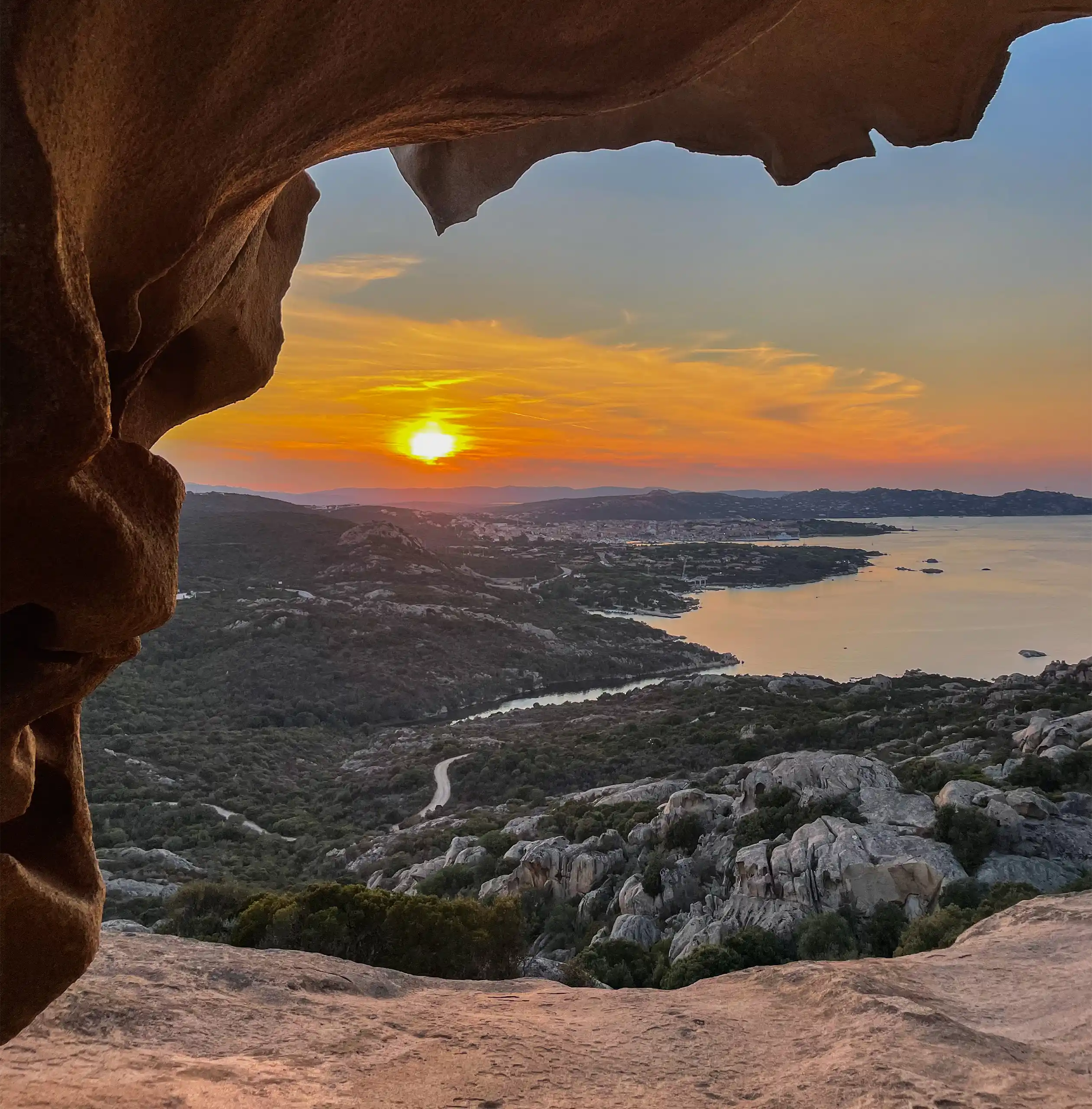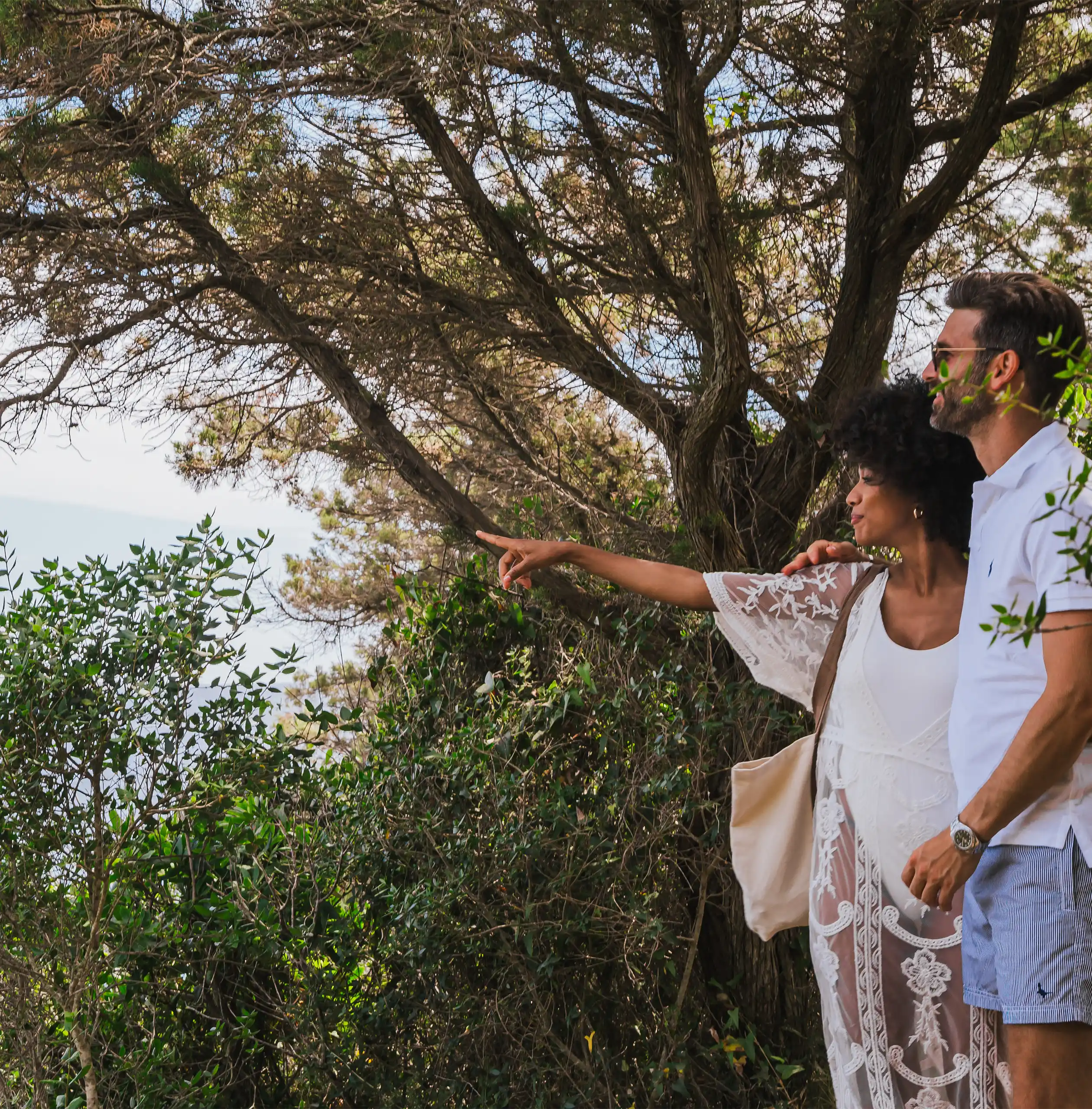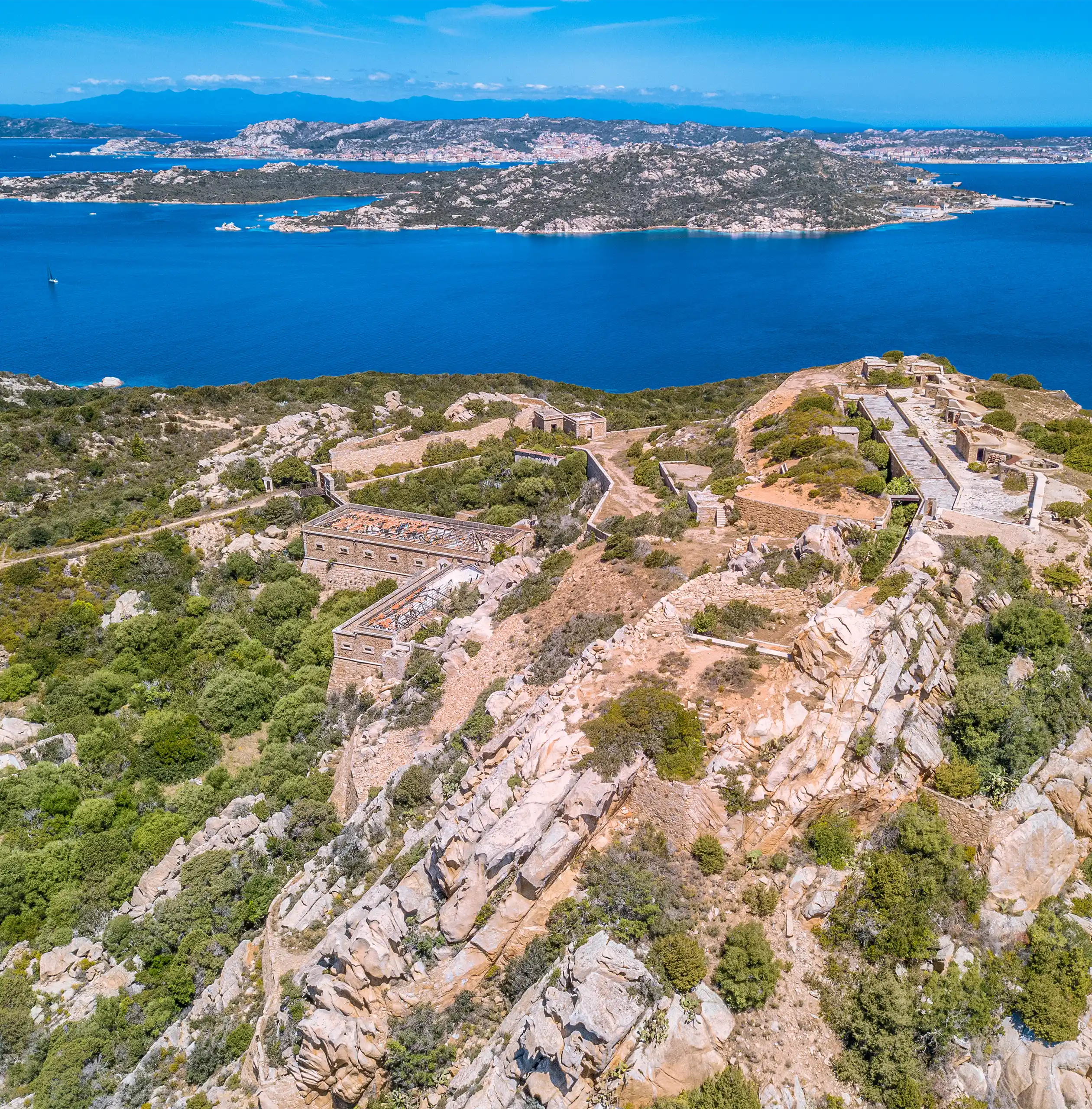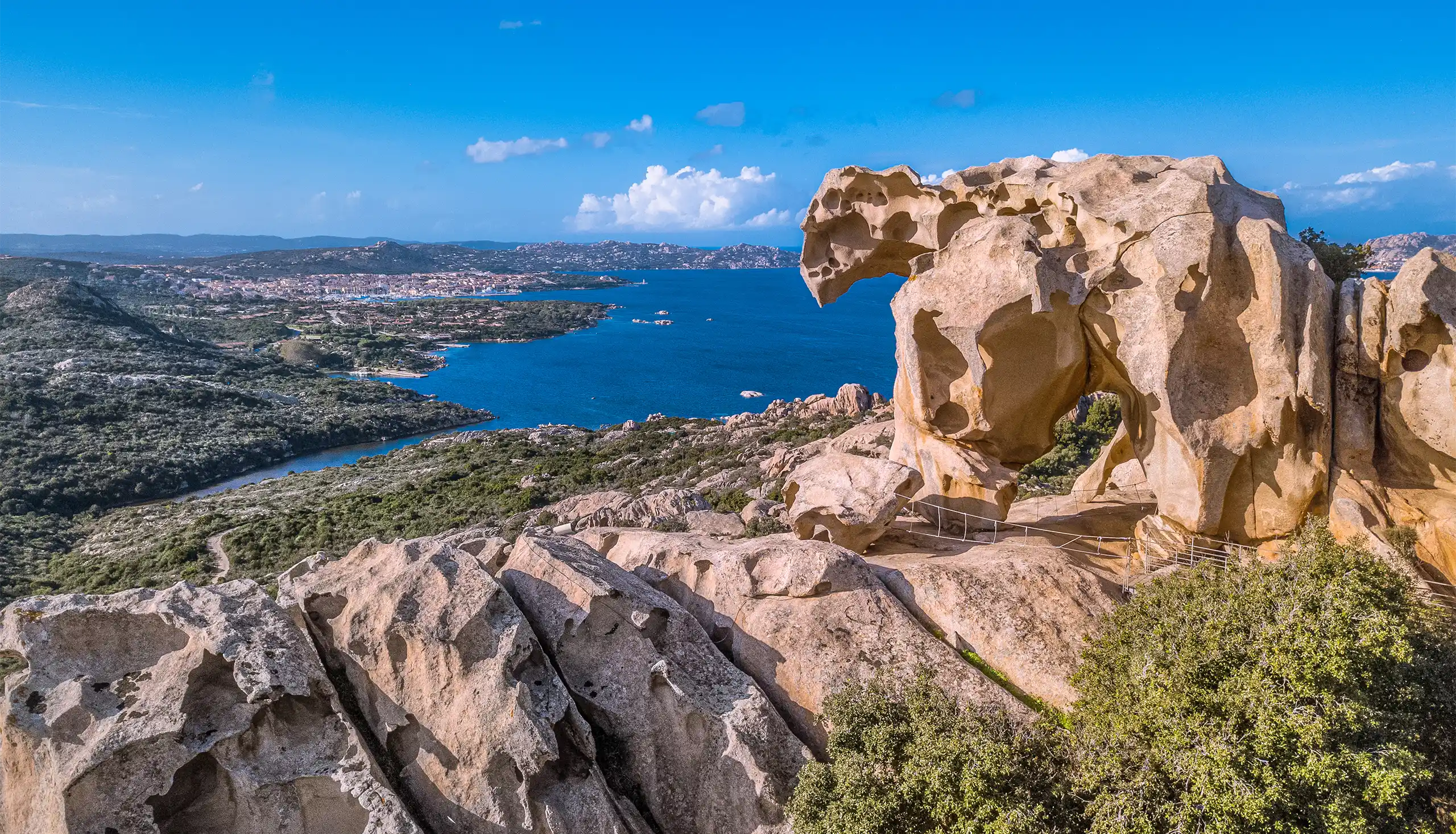Have you ever stood at the foot of the famous Bear Rock? If the answer is no, let me tell you about a place that is not just a masterpiece of nature, but also a piece of history shrouded in ancient legends.
One of Sardinia’s most famous rocks, declared a natural monument in 1993 and easily accessible from the Hotel Capo d’Orso This imposing natural sculpture stands about 120 metres above sea level, offering a breathtaking view over the islands of the La Maddalena Archipelago and the nearby town of Palau. A granite rock shaped by wind and erosion over millions of years, it takes the form of a bear looking out to sea when viewed from a certain angle.

The site has become an essential stop for sunset chasers and lovers of picturesque landscapes, as well as being highly valued for a dive into nature. Many hiking enthusiasts annually follow the half-kilometre scenic trail starting from the Capo d’Orso fort, one of the numerous 19th-century military fortifications in the area. This path, suitable for all and gently ascending, is enriched with informative panels about the animal species and main plants of the Mediterranean scrub, leading up to the promontory from where one can enjoy the view over the entire La Maddalena Archipelago.
Bear Rock is not just about nature. It is also a place rich in allure linked to great navigators and ancient myths. According to Victor Berard, a writer and scholar of Homer, this site might be identified with the land of the Laestrygonians, cannibal giants featured in the tenth book of the Odyssey. In search of provisions, Odysseus lands with his three ships at a spring called “Artacia”, meaning “of the bear”, where he encounters a hostile population that feasts on his crew and destroys two ships. Odysseus himself was forced to flee with the only vessel left.


A tale that extends beyond the epic poem: recent studies have highlighted traces of human presence dating back to the pre-Nuragic and Nuragic periods, with findings of ceramic fragments and other stone objects that testify to a long history of human settlements.
Even the name “Capo d’Orso” dates back to ancient times. The bear-shaped rock was well known to ancient sailors, so much so that its coordinates and description of this promontory were even recorded by Ptolemy, the Greek geographer of the 2nd century AD, who identified it as “Promontorium Arcti”, meaning “Bear Promontory”.
During your holiday in northern Sardinia, touch the history and, who knows, listen to the echo of ancient legends that still animate this magical headland today.
